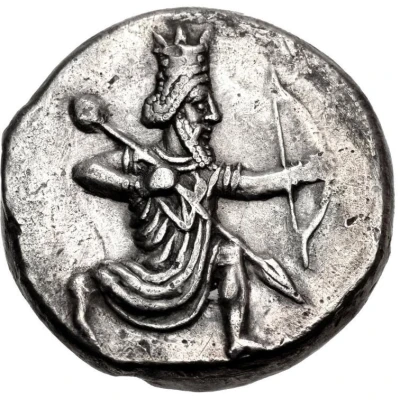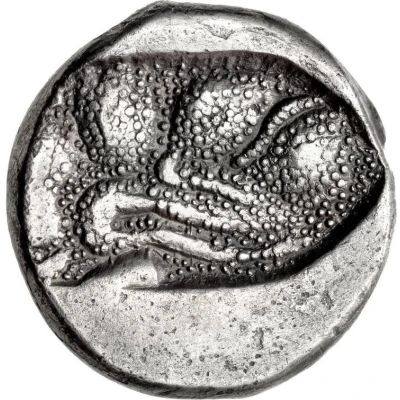


Tetradrachm - temp. Artaxerxes III / Darius III 350 BC - 333 BC
| Silver | 15.21 g | 22.5 mm |
| Issuer | Satrapy of Ionia (Achaemenid Satrapies) |
|---|---|
| King | Artaxerxes III Ochus (358 BC - 336 BC) Darius III Codomannus (336 BC - 330 BC) |
| Type | Standard circulation coin |
| Years | 350 BC - 333 BC |
| Value | Tetradrachm (4) |
| Currency | Drachm (550-330 BCE) |
| Composition | Silver |
| Weight | 15.21 g |
| Diameter | 22.5 mm |
| Shape | Round (irregular) |
| Technique | Hammered |
| Demonetized | Yes |
| Updated | 2024-10-10 |
| Numista | N#72109 |
|---|---|
| Rarity index | 100% |
Reverse
Incuse rectangle, containing pattern possibly depicting relief map of the hinterland of Ephesos
Comment
Johnston has interpreted this remarkable reverse design as a relief map of the hinterland of Ephesos, which would make it the earliest Greek map and first physical relief map known. On the right (north) are the mountains Tmolos and Messogis between the river valleys of the Caÿster and Maeander, to the left of which are three mountain ridges (Madranbaba Dagi, Karincali Dagi, and Akaba Tepesi). Johnston follows Six in suggesting that the coins were probably struck under the Persian general Memnon at Ephesos, circa 336-334 BC, in order to pay his army after he had captured the city, but before his defeat by Alexander at the Battle of Granicus in 334.
Johnston, Earliest 26; Mildenberg, Münzwesen pp. 25–6 and pl. XII, 110; BMC Ionia p. 324, 3-6; Pozzi 3138.
This remarkable coin was subject to all sorts of wild interpretations before its reverse was recognized for what it is: the earliest known map. The coin in fact seems to have been struck in Ionia and to represent, in the valley, the river Caÿster running toward the sea to the west. The river Hermus runs to the north of the Tmolus range, and the Maeander runs to the south of the Mesogis range; the tributaries of the Maeander, the Harpasus and the Morsunas, divide the southern mountain into three ridges visible at the bottom of the coin. Protruding from the upper right is the Dibek Dagi, a 3,700-foot peak. The coin reminds us that the ancients were capable cartographers—maps were necessary for military operations, trade, etc.—but the materials that bore their handiwork were extremely perishable.
Interesting fact
One interesting fact about this coin is that it features a unique blend of Persian and Greek influences in its design. The coin's obverse side features a portrait of the Persian king Artaxerxes III, while the reverse side features a depiction of the Greek goddess Athena, highlighting the cultural exchange and fusion that occurred during the Achaemenid Empire's rule over the Satrapy of Ionia.